Not sure how I missed it, but this summer I noticed some invasive multiflora rose growing rapidly in my front yard.
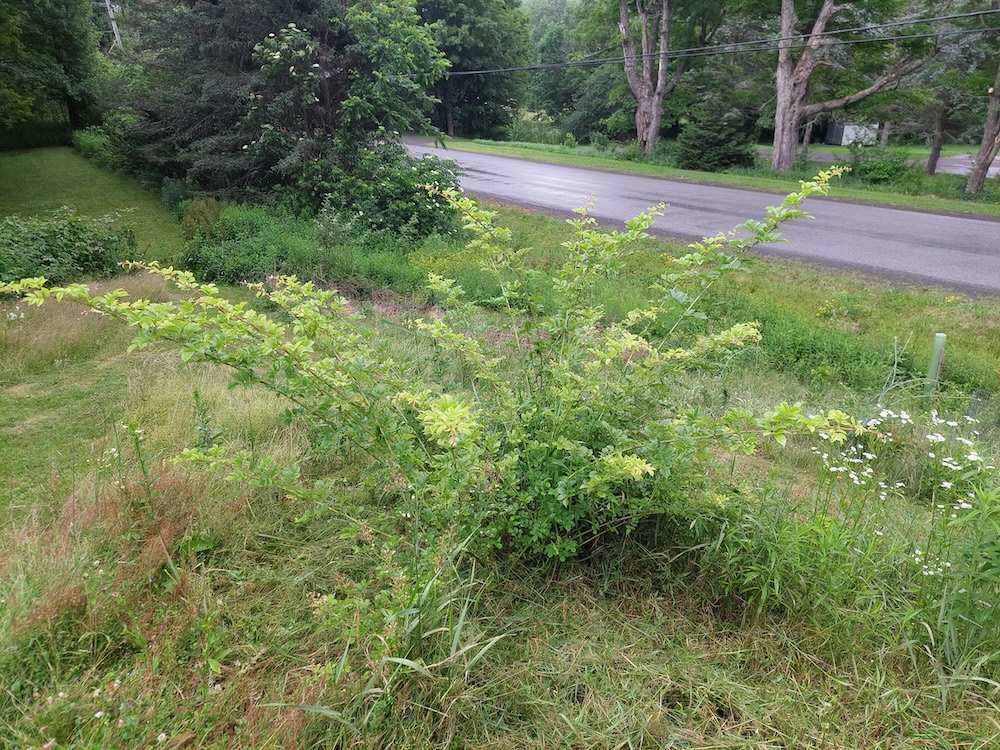
Multiflora rose growing in tall grass.
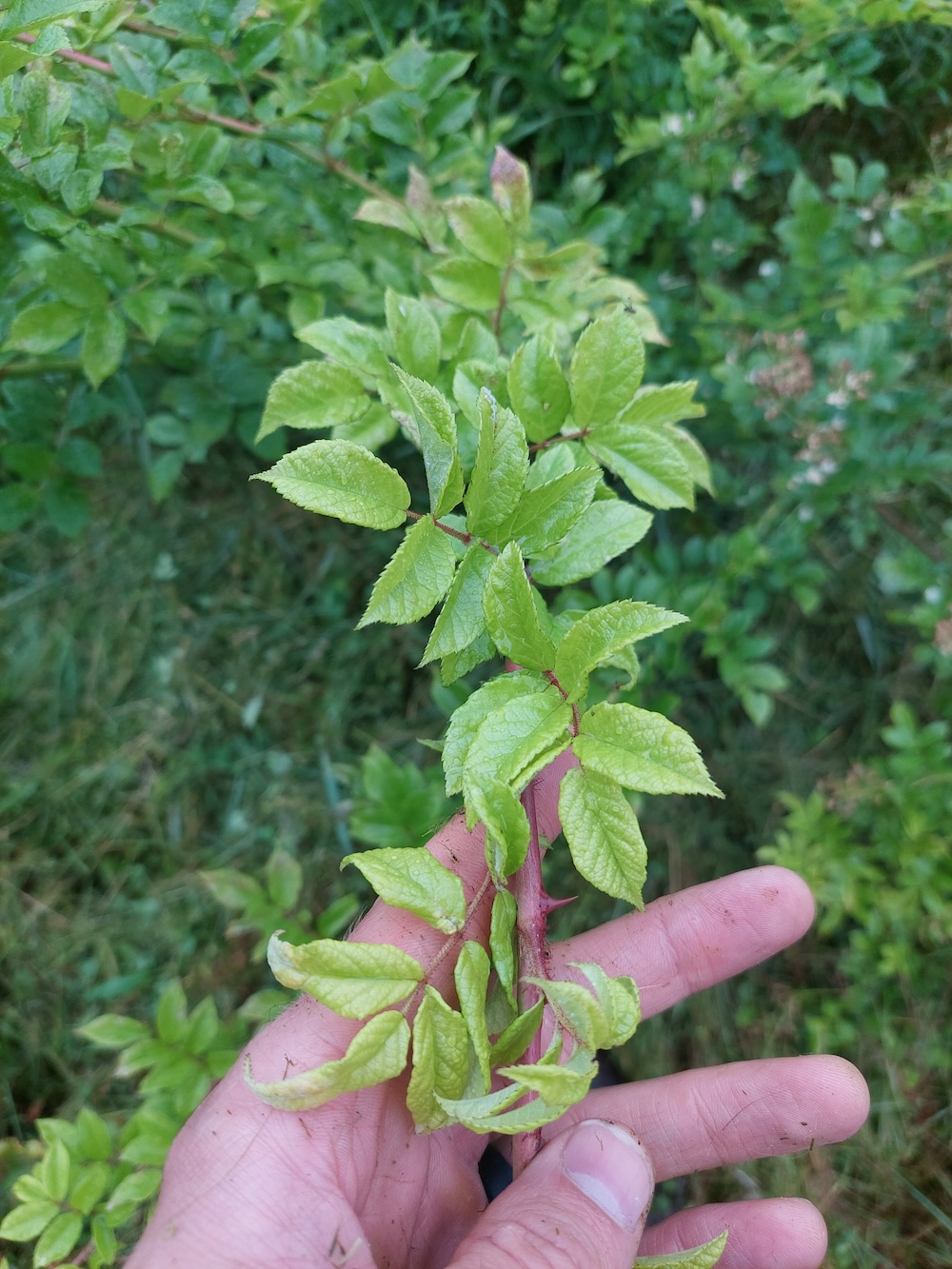
Multiflora rose stem.
I decided to look around for other invasive plant species. I found Japanese barberry and garlic mustard growing in the space where a big spruce tree once stood. We had it removed in May 2024 because it was growing too close to the house. Doing so let in a lot of light and the vegetation responded!
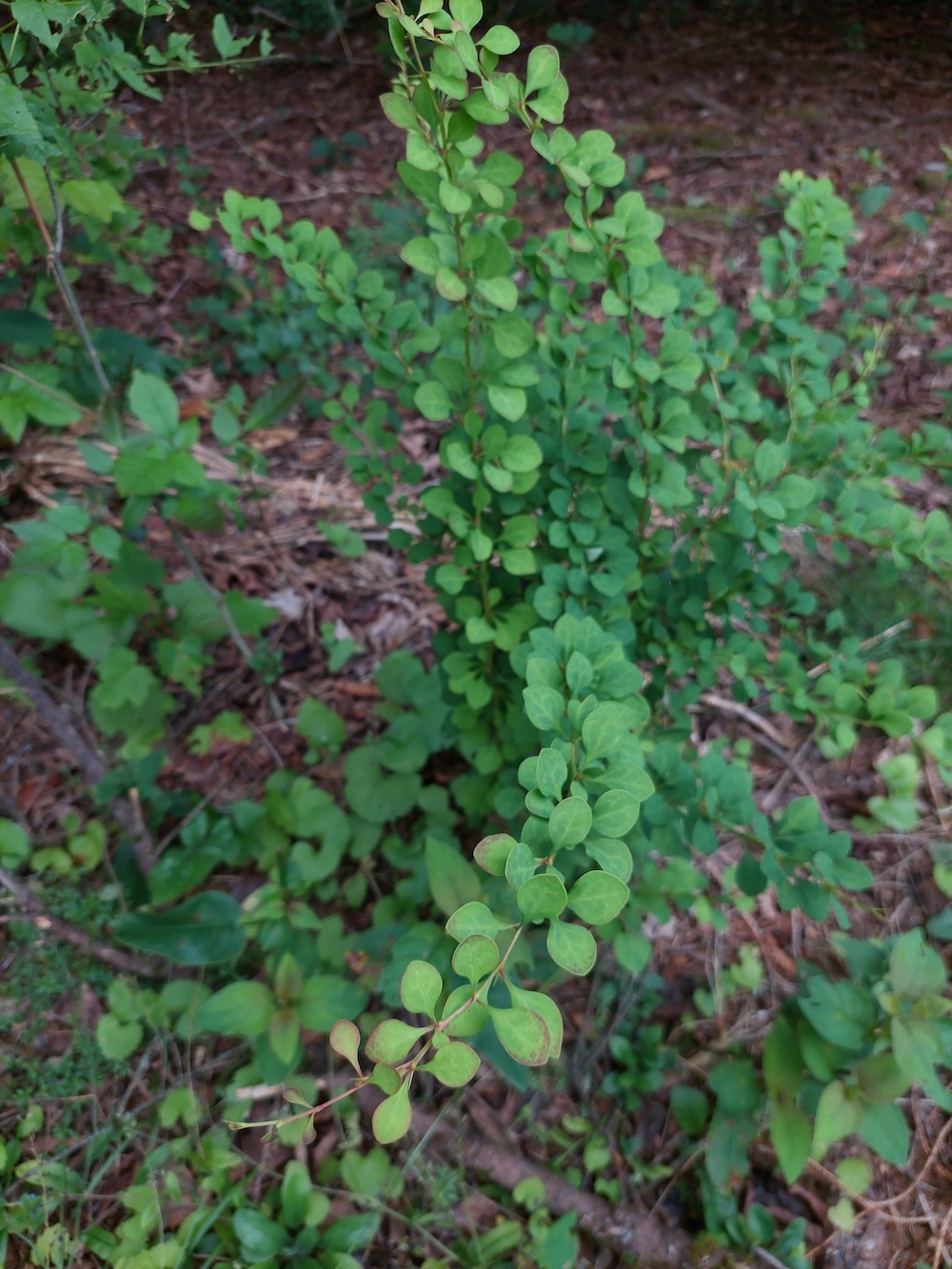
Japanese barberry.
The Japanese barberry was small and pulled up easily with work gloves. Thankfully, there were only a few small plants, and I was able to avoid the barbs by grabbing at the base of the plant.
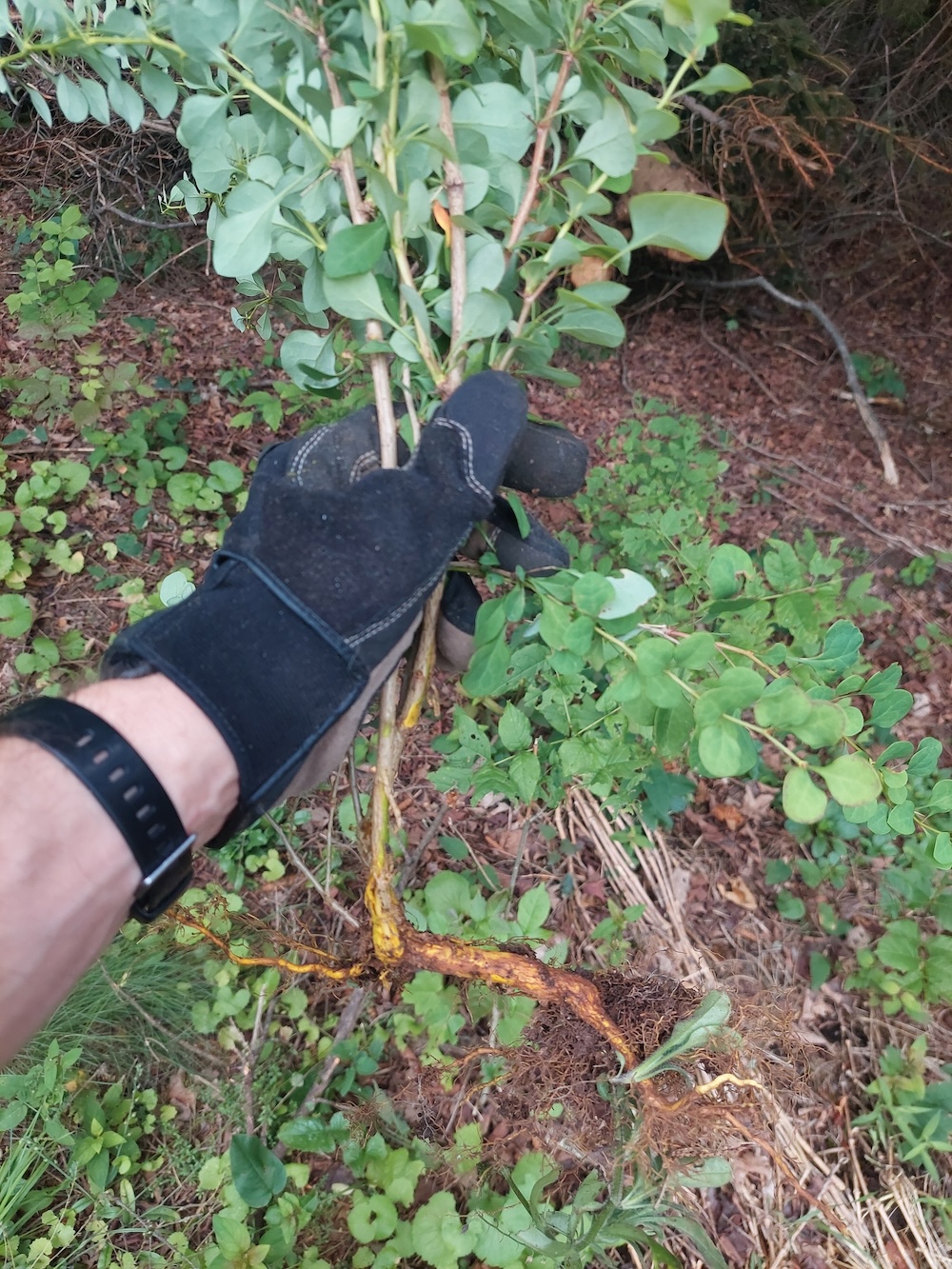
Japanese barberry pulled up by hand.
The multiflora rose turned out to be easy to remove as well. I used heavy-duty loppers and cut the plant off at the base. The bush rolled down the hill like a tumbleweed.
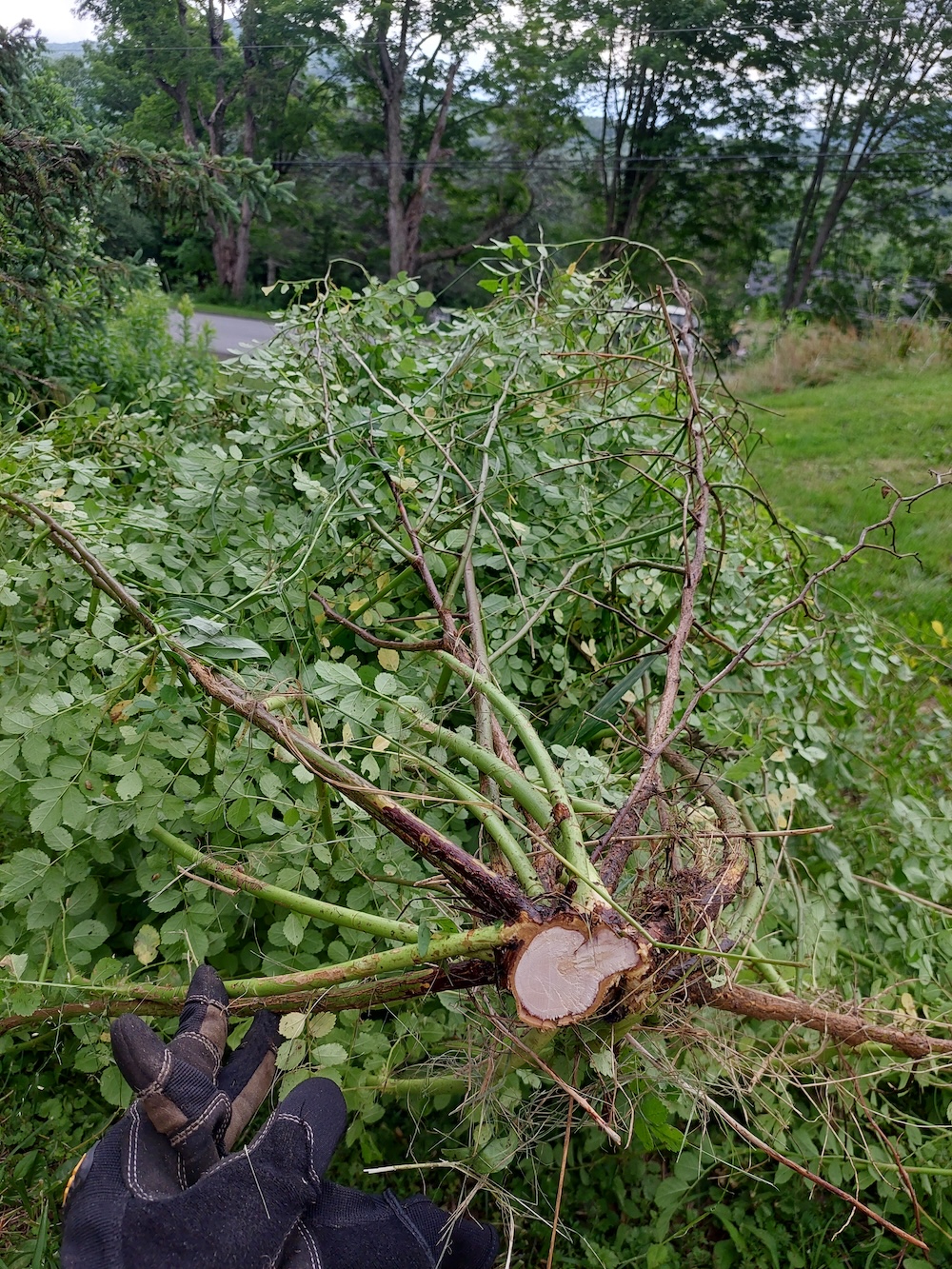
Multiflora rose lopped at the base.
I used a shovel to dig around the root and pop it up. I think I got most of it. It was satisfying to take out these invasives before they became overwhelming. Now that the thorny invasives are gone, I will go to work on the garlic mustard.
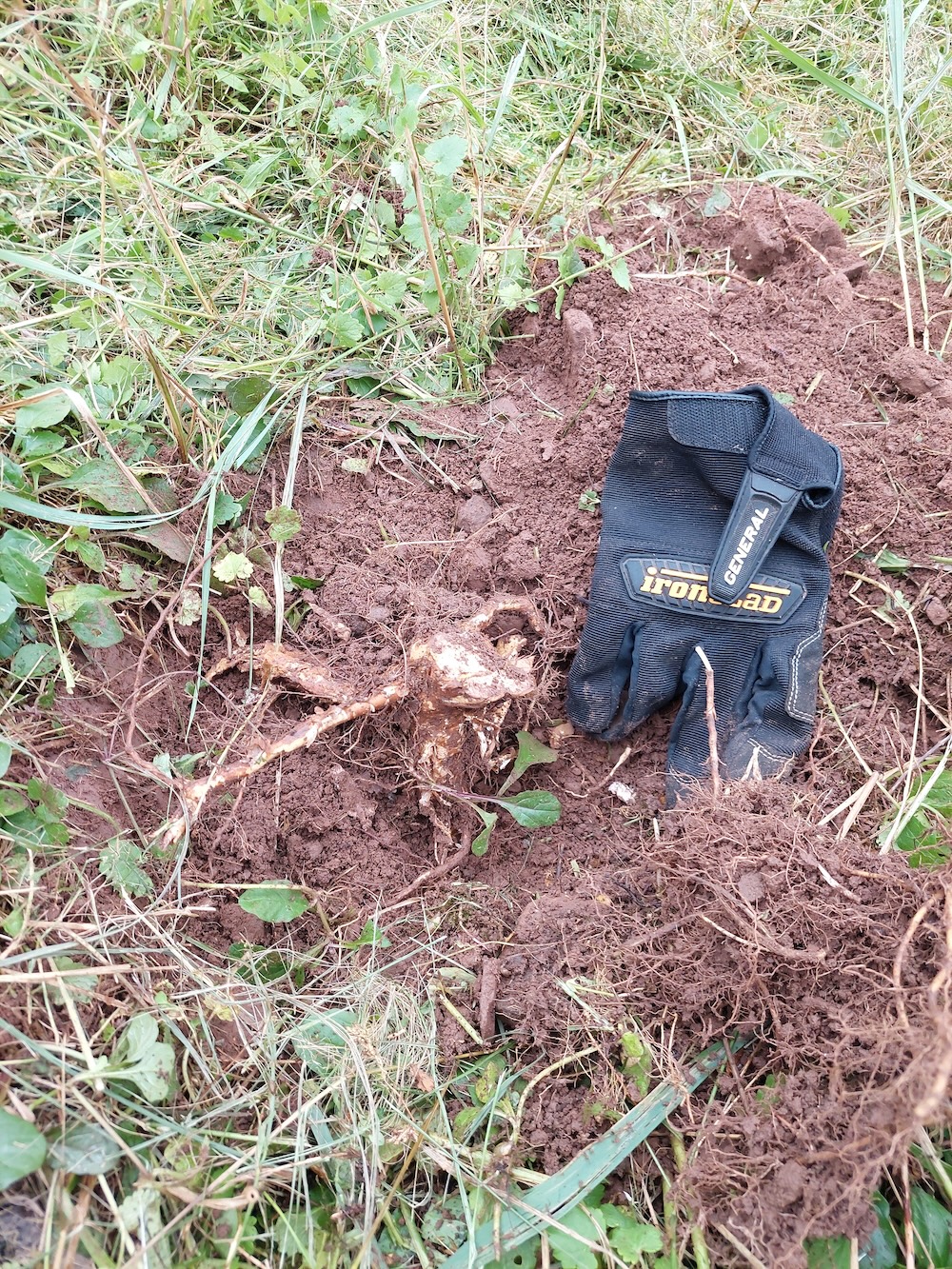
A sturdy multiflora rose stem dug up with a shovel.
The photo below shows the tools I used to remove the invasives: a round-nosed shovel, heavy-duty loppers, work gloves, and safety glasses
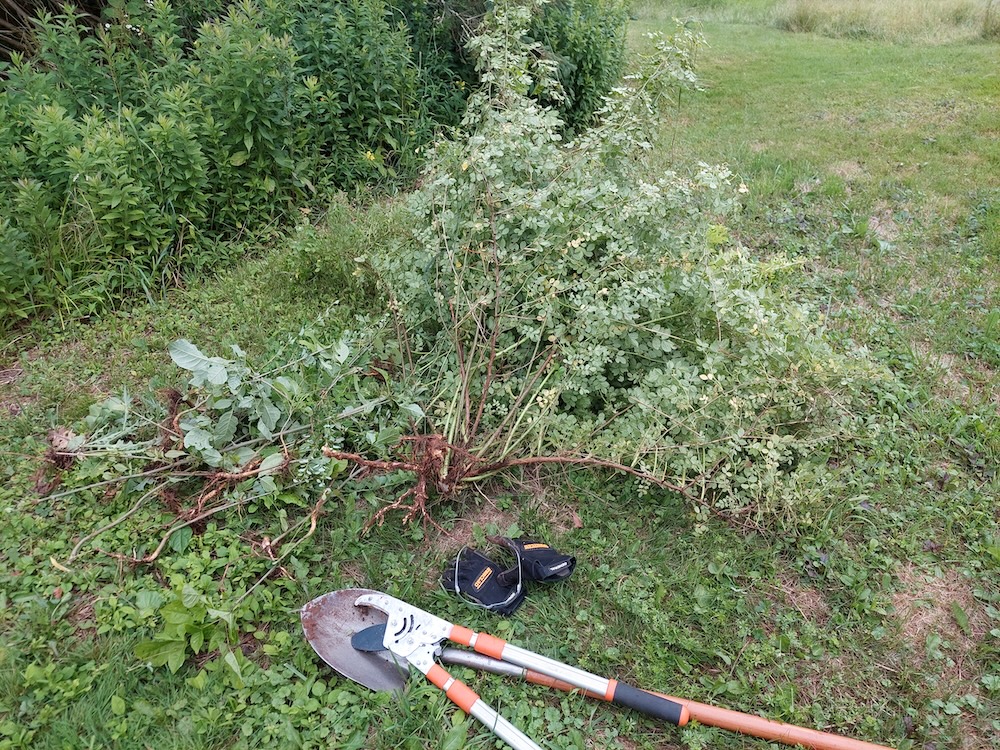
Note that I let the plants wither in the hot sun for a few days before tossing them in the woods. I don’t think they could re-establish, but I will be watching.
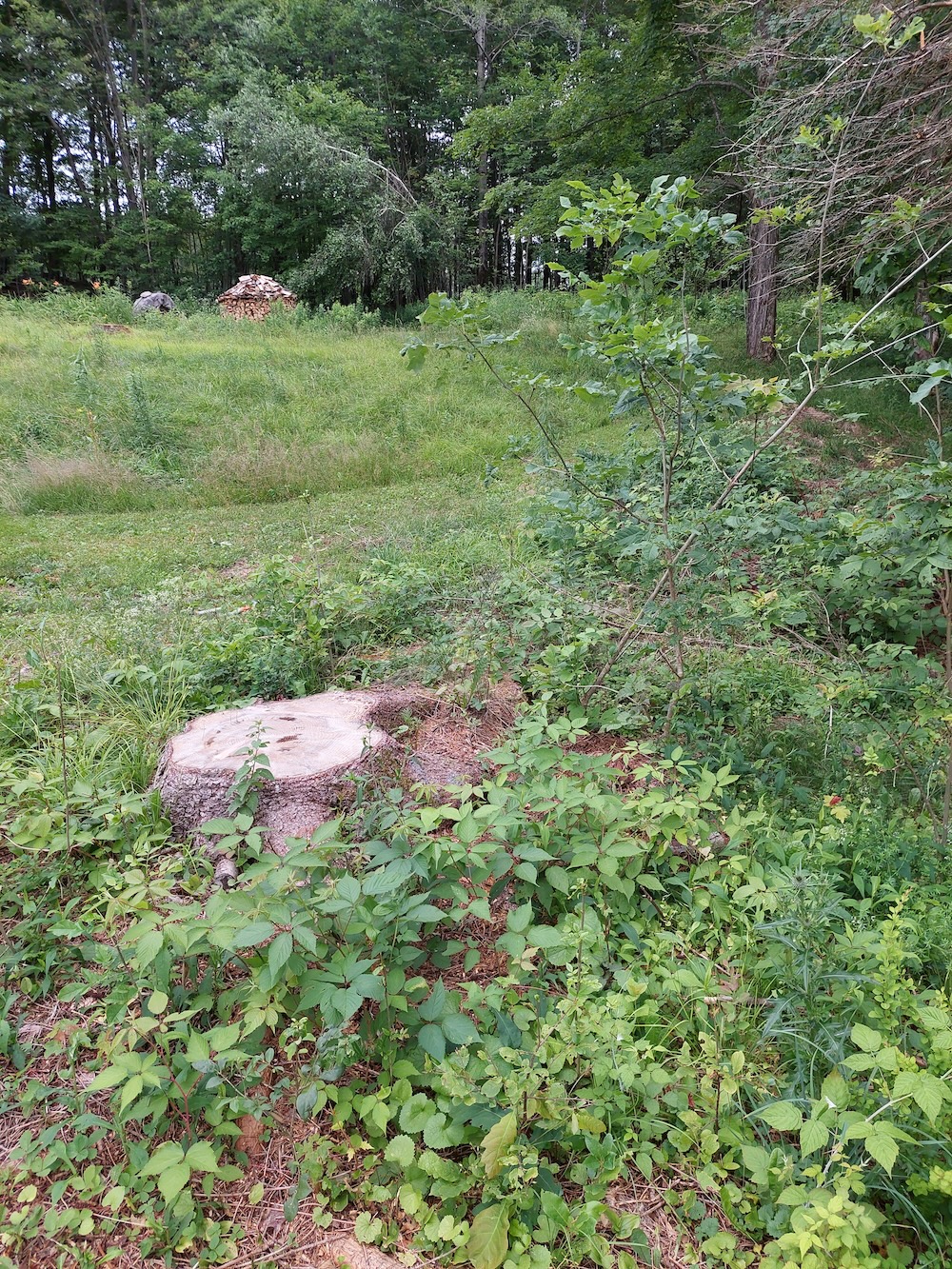
Area where most of the invasive plant removal took place.
Hopefully this blog will inspire you to identify and remove invasive plants on your property.
Additional resources:
MyWoodlot has a great vlog about Japanese barberry identification and control.





